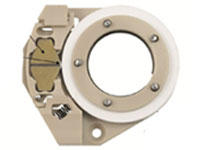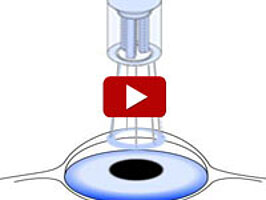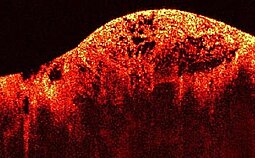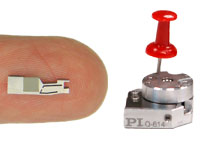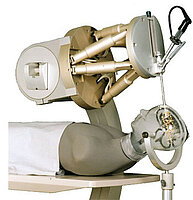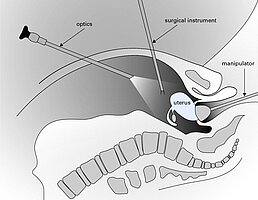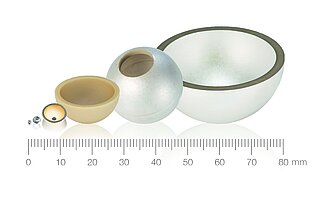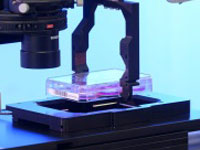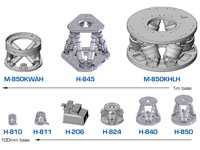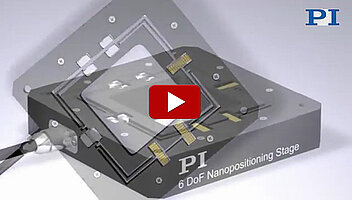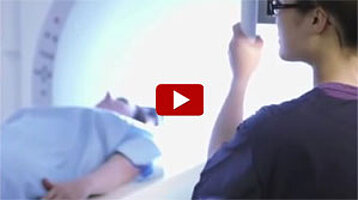Advances in piezo mechanics aid eye surgery
Piezo motion-based mechanisms provide a variety of features that are highly sought after in life-science and medical engineering applications, such sterile ceramic designs and lubricant-free drives. Ceramics are also non-magnetic, an advantage in high-energy imaging/scanning based on strong magnetic fields.
Scanner Technology for OCT
OCT - a new generation of scanning stages allows researchers and engineers to design smaller and higher performing instruments for Optical Coherent Tomography. This interferometric imaging technique originally used in ophthalmology but recently now also finds growing application in dermatology.
Miniature motors make for smaller positioners
Size matters in miniaturization and automation – smaller is usually better. Traditional electromagnetic motors have limitations when it comes to shrinking dimensions while maintaining high efficiency and accuracy of motion with minimized energy consumption. Piezo ceramic inertia motors can fill this gap.
Hexapod robots in laser microsurgery research
Laser micro-surgery can benefit from tracking and image-based methods that improve precision and safety. Advanced software, together with stereo camera feedback, allow for motion estimation reduce tracking errors. Add to that a 6-axis parallel kinematics position, also known as a hexapod, provides a compact and flexible solution, compared to traditional stacks of single axis stages.
Imaging: Miniature drives for focus and zoom control for endoscopy
Minimal invasive surgery (MIS) is aiming at causing patients as little discomfort as possible and endoscopes play an important role here. Traditional Chip-on-the-Tip endoscopes use fixed focus optics, which cannot display objects at different distances with optimum resolution. By integrating a miniature drive, it could become possible to achieve variable focusing, so that the object can always be displayed optimally in sharp focus.
Automation and Microscopy: Faster test & measurement, surface metrology
Everybody who commutes by car is familiar with the concept: constant velocity gets you faster to your destination than stop-and-go traffic. This well-known principle from the macro-world is now employed in the nano-world by scientists from the Fraunhofer Institute for Production Technology IPT in Aachen, Germany.
Parallel Kinematic Machines (PKM’s)
PKM’s are often referred to as Stewart Platforms. Based on a 6-axis (XYZ, Pitch, Roll, Yaw) actuator system arranged in parallel between a top and bottom platform, PKM’s have many advantages over serial kinematics designs, such as lower inertia, improved dynamics, smaller package size and higher stiffness.
Piezo nanopositioning basics – precision, speed, stability
There are several ways to achieve nanometer precision motion.The best positioning systems avoid friction all together, in both the drive system (motor) and in the guiding system (bearings). Piezo drives provide much more than just nanometer resolution.
